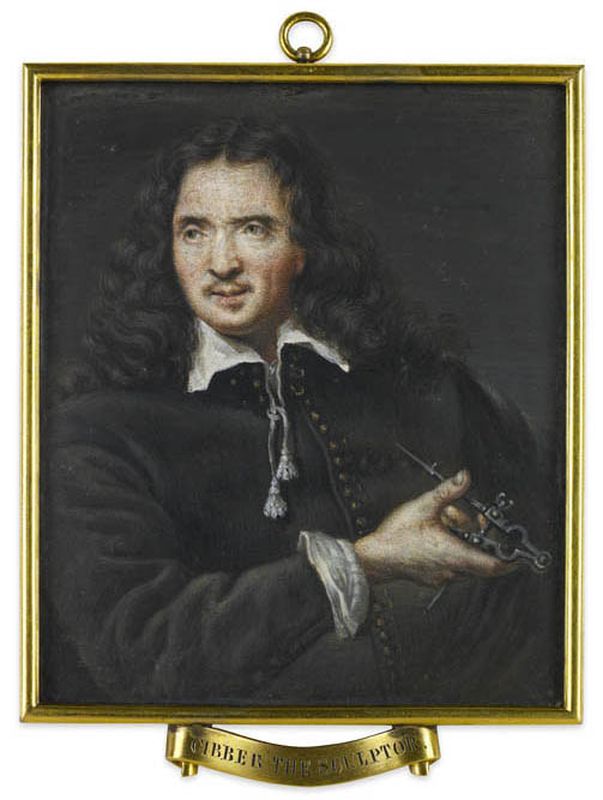Caius Gabriel Cibber (1630–1700)
Caius Gabriel Cibber (1630–1700), sculptor, was son of a cabinet-maker to Frederick III, the Danish king. He arrived in England around 1655, and became journeyman and then foreman to John Stone, John Stone, son of the late master mason to Charles I. When Stone suffered a seizure in 1660, Cibber ran his workshop in Long Acre. He became sculptor to Charles II on 20 June 1667. With his wife Jane Colley (c.1646–1697) of Glaston in Rutland, Cibber had three children: poet laureate and playwright Colley Cibber (1671–1757), Veronica, and Lewis. Among other works, Cibber is known for his figures of Melancholy Madness and Raving Madness (1680) which adorned the gateway in front of Bethlehem Hospital.
Dictionary of National Biography (1885–1900)
CIBBER or CIBERT, CAIUS GABRIEL (1630–1700), sculptor, was born at Flensborg in Holstein, in 1630. He was the son of the king of Denmark's cabinet-maker, who, on discovering in the youth a talent for modelling, sent him to Rome, and supported him there in the prosecution of his studies. John Stone, the sculptor, going to Holland, was seized with palsy, and Ciboer, being his foreman, was sent to conduct him home. This occurred during the time of the Commonwealth. When m England, Stone gave Cibber employment for some years. Eventually he was appointed carver to the king's closet, a place of no great emolument or consequence — at least, it does not appear that he did much work for his royal patron; it was from private sources he was enabled to establish his professional reputation. He was twice married. By Jane Colley, hia second wife, a descendant of the ancient family of Colley in Rutlandshire, he had a dowry of 6,000 l., and was married to her at St. Giles-in-the-Fields on 24 Nov. 1670. The eldest child of this marriage was Colley Cibber [q. v.], born in London in November 1671 (Gent. Mag. 1860, pt. ii. 367). Cibber died in London in 1700, and was buried in the Danish and Norwegian church in Wellclose Square, of which he was the architect in 1696. This church was engraved by John Kip in 1697. Among Cibber's sculptured works are the statues of the king placed around the old Royal Exchange, including those of Charles I and Sir T. Gresham, and the figures of 'Melancholy and Raving Madness,' which were originally set up over the entrance gate of Bethlehem Hospital in 1680. At that time the hospital was in Moorfields. These two statues, engraved by William Sharp, after Thomas StoUiard, and published on 4 June 1783, and also engraved by C. Grignon, were repaired by John Bacon in 1815, and afterwards removed to the South Kensington Museum. It is said that they were portraits of patients in that asylum, one of whom had been a porter to Oliver Cromwell. The first Duke of Devonshire employed Cibber at Chatsworth, where he executed two sphinxes on large bases, several doorcases of alabaster, and in the chapel two statues, one on each side of the altar, representing Faith and Hope, besides Pallas, Apollo, and four seahorses and a triton. For these he was paid the sum of 100 l. Sir Christopher Wren commissioned him to carve the phoenix, in bas-relief, which is placed above the southern door of St. Pauls Cathedral. It is in freestone, 18 feet long by 9 feet high. He also executed the large bas-relief in the western front of the pedestal of the Monument of London in 1672. This has been engraved by N. G. Goodnight. He sculptured at Hampton Court, in competition wuth Valadier, a large vase, and the fountain formerly in Soho Square. His portrait has been engraved by A. Bannerman.
[Redgrave's Dict. of Artists, 1878; Walpole's Anecdotes of Painting, 1862, ii. 549.]
